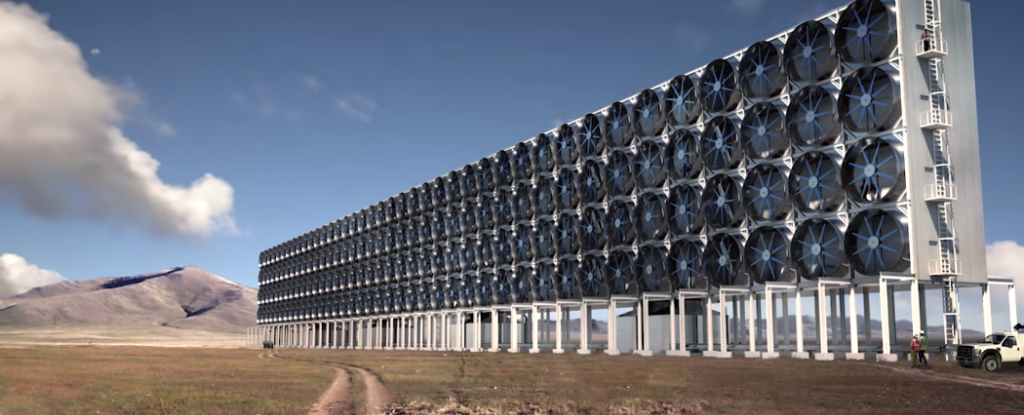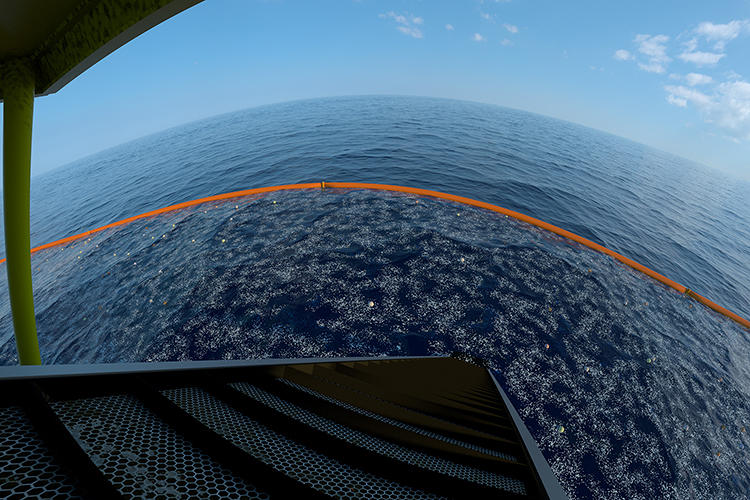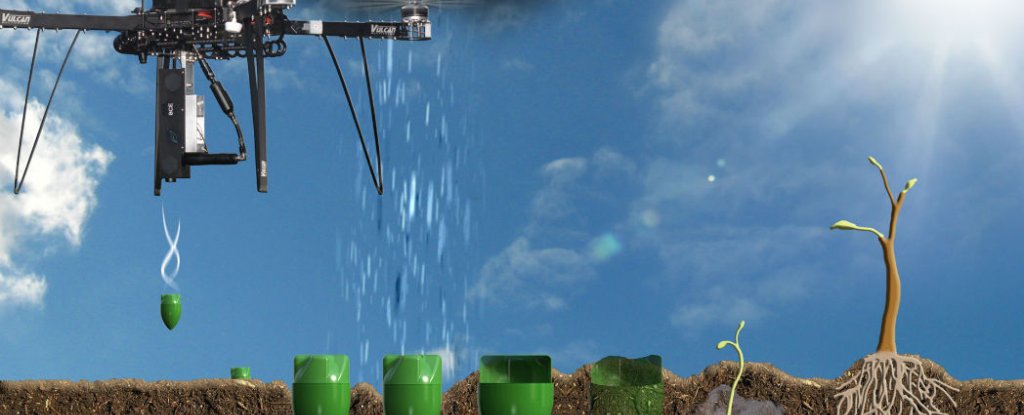It's no secret that the planet is in serious trouble. By August 8 this year, we'd already used up an entire year's worth of resources - leaving us in the planetary red five days earlier than we were last year.
But while it can often feel like we're powerless to stop the climate getting warmer or the oceans rising to the point where Earth is no longer habitable, scientists aren't anywhere near giving up on our planet.
In fact, scientists are constantly coming up with some pretty ingenious ways to fix humankind's biggest problems.
Here are just a few of the Marvel-worthy breakthroughs that happen when science and the environment collide:
1. Sucking CO2 out of the air and turning it into fuel
Researchers in Canada have developed a device that can suck CO2 pollution straight out of the air and convert it into fuel.
Developed by a start-up called Carbon Engineering, partly funded by Bill Gates, the system works by sucking CO2 out of the air, and then combining it with hydrogen split from water to form hydrocarbon fuel.
 Carbon Engineering
Carbon Engineering
The process is totally powered by renewable energy sources, but so far the prototype can only remove about 450 tonnes of CO2 each year – which doesn't make much of a dent in the roughly 40 billion tonnes of carbon pumped into the atmosphere by humans annually.
But the system could easily be scaled up, and an extended version launching in 2017 is expected to produce 400 litres of gasoline or diesel per day – all from the carbon in our air, rather than fossil fuels.
2. Getting worms to eat our plastic waste
By 2050, it's predicted that there'll be more plastic in than fish in the oceans, and a lot of it gets there after we throw out things like plastic bags and coffee cups, or when plastic waste blows off of landfill.
But at the end of last year, for the first time, researchers found bacteria inside the gut of mealworms that can safely degrade plastic.
In fact, the team showed that these mealworm can happily live on a diet of Styrofoam and polystyrene, which means that they could be used to break the waste down safely before it ends up in landfill or the ocean.
Right now, it would take a whole lot of mealworms to eat all the waste we produce, but the team is looking into which enzyme is responsible for breaking down the plastic, and hopefully enhancing it to make it more efficient.
3. Cleaning up the ocean garbage patch with a giant net
For the plastic that's already in the ocean, 22-year-old Boyan Slat has come up with a different plan.
Two years ago, he proposed creating a giant v-shaped filter, and attaching it to the seafloor, so natural wind patterns and ocean currents would collect the trash for us.
 TheOceanCleanup
TheOceanCleanup
It seemed like a pretty crazy idea at the time, but he's now built a prototype and has the backing of 15 universities and a successful crowd-funding campaign. If anyone can make it happen…
4. Creating diamond clouds
Using geoengineering to create artificial clouds has been proposed as an extreme measure for cooling the planet down.
In the past, scientists have suggested pumping huge amounts of sulphur dioxide into the atmosphere - the same substance that's released during volcanic eruptions, which in the past have been shown to cool the planet down.
But sulphur dioxide also doesn't have the best effect on planet and animal life, and isn't the healthiest thing to breathe in, so Harvard scientists have come up with another idea – flinging tonnes of powdered alumina and diamond dust into the atmosphere.
The idea is that this dust, just like sulphur dioxide, will reflect sunlight, keeping Earth cooler for longer - without the toxic side effects. The research is still in its early phases, but it's good to know that if the situation gets dire enough for geoengineering to step in, at least we'll have something nice to look at.
5. Using drones to replant trees
With Earth's forests being bulldozed faster than they can regenerate, former NASA engineer Lauren Fletcher has come up with an ingenious solution – using drones to plant trees at a rate of 1 billion per year.
The idea behind the company, BioCarbon Engineering, is that humans on our own are no longer enough to be able to replace all the trees we clear for housing, farmland, and paper every single year.
But developments in technology brought us this problem, so why not use technology to fix it?
 BioCarbon Engineering
BioCarbon Engineering
Thanks to the latest developments in drones, it's now possible to have the aerial vehicles not only drop seed capsules, but also water and monitor new trees, all without humans having to leave their homes.
"Destruction of global forests from lumber, mining, agriculture, and urban expansion destroys 26 billion trees each year. We believe that this industrial scale deforestation is best combated using the latest automation technologies," says the BioCarbon Engineering website.
This story was sponsored by the Sydney Science Festival.
Find out more about what happens when science collides with the environment, art, and culture, by checking out their full series of events.
